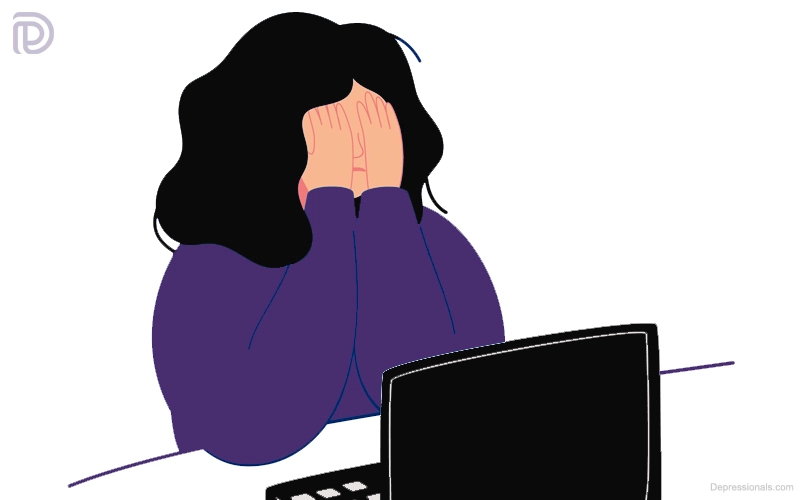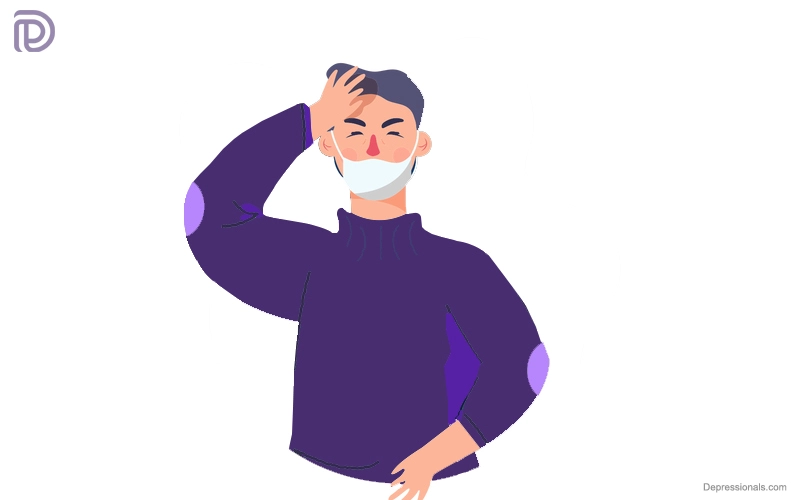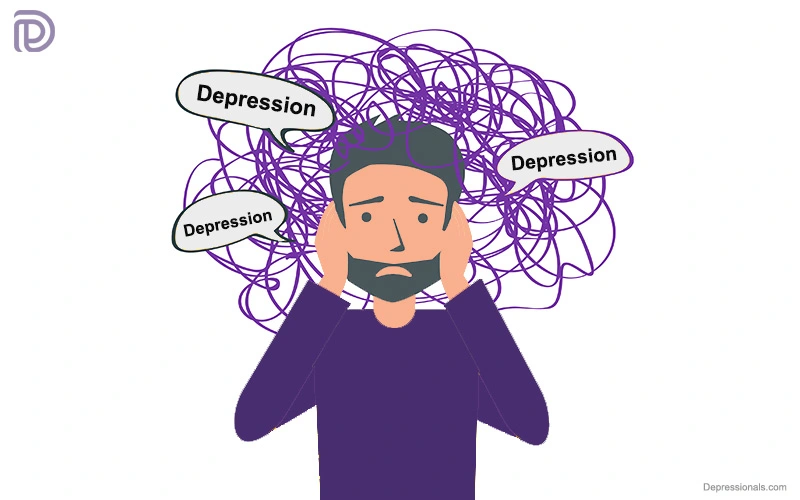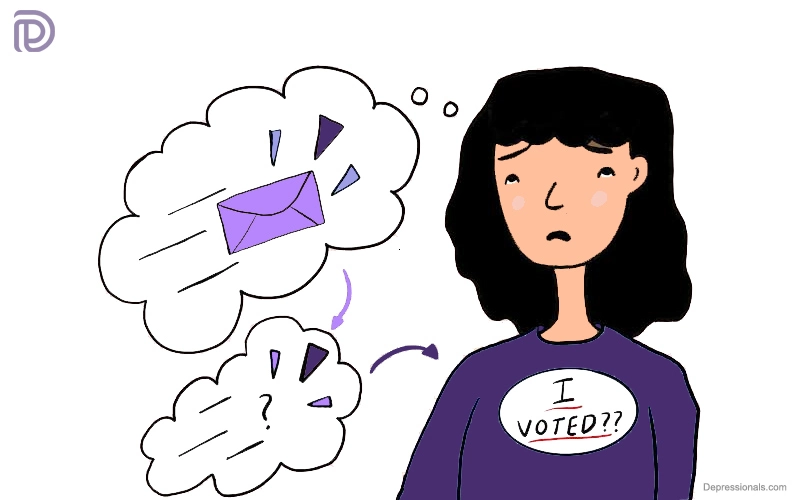In the U.S, between 3% and 6% of the population suffers from chronic (longstanding) depression referred to as “double depression.” As with any form of depression, double depression can negatively impact daily functioning and quality of life and increase the possibility of suicidal ideas or behavior. There are treatments that can help, however, many people delay or avoid getting the help they need.
What is double depression?
Double depression is a consequence of a mental illness known as dysthymic disorder or dysthymia. A dysthymic mood refers to a persistent and depressed mood accompanied by just one or two other symptoms of clinical depression (such as low self-esteem or energy), lasting for at least two years in adults (and one year for children).
An unpleasant, downhearted mood often referred to as a “veil of sadness” can occur almost daily and last for long periods of time. It is possible that people with this mood disorder can suffer from it for 10 to 20 years or even longer.
Approximately half of the sufferers of dysthymia experience worsening symptoms over time, resulting in the development of major depression in addition to their dysthymia, known as “double depression”.
When you have both PDD and MDD, you have double depression.
A number of symptoms are common to both types of depression. PDD is a chronic, lower-grade form of depression whereas MDD is a severe form of depression.
Diagnostic and Statistical Manual of Mental Disorders (DSM) is the most widely used handbook for diagnosing mental health problems. In DSM-5, there are criteria for determining the diagnosis of PDD and MDD.
The DSM-5 does not recognize double depression as an official diagnosis, even though researchers and others call it that.
You can still call it double depression if you have both PDD and MDD coexisting.
Read: Situational Depression
How is double depression different from major depression without dysthymia?
When there is a double depression, there is a chronic low-grade depression preceding a full depression, whereas when there is a major depression alone, no chronic low-grade depression occurs. Normal mood is normally present at the “baseline” of people with non-chronic major depression. Double depression can prevent people from knowing what it is like to be in a normal, non-depressive mood.
Approximately 1 in 5 people who experience major depression develop chronic depression and suffer from it for more than two years. As chronic major depression and dysthymic disorder tend to be more similar than not, modern diagnostic systems classify them as chronic depression. The full course of major depression is typically short, usually lasting one to three months. It is characterized by a drop in mood as well as severe symptoms including:
- Hopelessness
- Oversleeping or insomnia
- Suicidal or death thoughts
- Low self-esteem
- Loss of appetite or overeating
- Poor concentration
- Individuals lose interest in things they once enjoyed
- Agitation or low energy
- Guilt or feelings of worthlessness
The mood should return to normal as the other symptoms of a major depressive episode resolve when the depressive episode is effectively treated. The treatment process often helps patients realize that depression is not normal and that things can improve.
There are some symptoms of major depression present in people who have dysthymia, but they are fewer, milder, and less debilitating than those seen in people with major depression. People with mild depression don’t typically experience problems with their day-to-day functioning like those with major depressions. Dysthymia sufferers tend to think of their symptoms as normal. It is possible for some people to think that low mood is a natural part of their personality or is simply an expression of life and is not within their control.
Many people with dysthymia accept that their mood will deteriorate when they experience a major depression on top of chronic depression. They delay seeking treatment due to this, and, once they do receive treatment, are less receptive to it. Furthermore, when the major depression is alleviated without also treating dysthymia, they will not be cured. They may experience a new episode of double depression as a result of being chronically down.
What are the parts of double depression?
Persistent depressive disorder
The diagnosis of Persistent depressive disorder (PDD) is relatively new. Dysthymia was once known as chronic major depression or dysthymia.
PDD is diagnosed based on the following criteria:
- Adults: Have been depressed for two years or more
- Children and teens: Moods depressed or irritable for at least a year
- Symptoms lasting longer than 2 months
Additionally, you must have two or more of the following symptoms:
- Eating too much or having a poor appetite
- Excessive sleep or insomnia
- Fatigue or low energy levels
- Low self-esteem
- Inability to concentrate or make decisions
- Hopelessness
It may not be obvious to you at the time that there is another way to feel since PDD is a long-term condition. Possibly even your personality explains it – but it is not you. You have nothing to do with it. This is a treatable disorder.
It is common for coexisting disorders to include:
- Anxiety
- Major depression
- Personality disorders
- Substance use disorders
Read: Depression in Teens
Major depressive disorder
The symptoms of MDD include persistent and intense feelings of sadness and an inability to keep up with daily activities. This disorder affects your mood and behavior profoundly. You may find it difficult to continue as usual, if not impossible.
Symptoms must occur within a two-week period and include at least five of the following. The loss of interest, the loss of pleasure, or depression must define at least one of these factors.
- Depression (or irritability in children and adolescents)
- Reduced interest in most activities
- Changes in weight or appetite
- Insomnia or oversleeping
- Slowed or altered movements
- Feeling tired or drained
- Feeling worthless or guilty
- Inability to concentrate or make decisions
- Suicidal thoughts, plans to commit suicide or attempts to commit suicide
The symptoms must not be explained by drugs, medicines, or other medical conditions in order to qualify for a diagnosis of MDD.
Someone who has experienced a major depressive episode in the past is likely to experience another during their lifetime.
Though major depression can be treated, it needs to be diagnosed and treated.
Read: Melancholic Depression
What causes double depression?
It is not always clear what causes depression. There are likely to be a number of causes rather than just one, including:
- Brain changes
- Brain chemistry
- Environment
- Genetics
- Hormones
Depression can be caused by a number of factors, including:
- Low self-esteem
- Abuse, the loss of a loved one, financial and relationship difficulties are all traumatic experiences
- Those who have been depressed, abused alcohol, or committed suicide in the past
- A post-traumatic stress disorder (PTSD), anxiety disorder, or eating disorder can also be present
- Drugs and alcohol
- Serious chronic illness
What are the symptoms of double depression?
Double depression disorder is chronic. There are typically no clear-cut depression episodes. Major depression has profound symptoms. It’s likely that you will recognize them when they hit as being out of the ordinary.
This has happened to many people. Approximately half of all people with PDD will experience major depression at least once in their lifetime.
People with double depression disorder experience different symptoms. There may be an increase in depression and hopelessness, as well as other symptoms of PDD. When you have PDD, what is already a challenge may become even more challenging.
Other double depression symptoms might also be present:
- Feelings of guilt, worthlessness or emptiness
- Illness or aches and pains that are unexplained
- Weak muscles
- Suicidal thoughts
- A recurring desire to commit suicide
- Suicide plans
This indicates a mental health issue that should be addressed immediately.
Read: Endogenous Depression
What is the diagnosis of double depression?
Get in touch with your primary care physician or mental health provider if you are experiencing depression symptoms.
Physical examinations and lab tests may be performed during your visit to rule out similar medical conditions. The difference between PDD, MDD and double depression cannot be diagnosed by a lab test.
You may be able to tell that you are suffering from major depression fairly quickly if you already have PDD.
The diagnosis will be made by your primary care physician or he or she may refer you to a mental health professional. An examination is used to determine whether you meet the diagnosis criteria for PMD, MDD or both. You must be completely honest about everything going on with you.
You have double depression if you meet both criteria.
Read: Economic Depression
What are the treatments for double depression?
The treatment for PDD and MDD is the same. Psychotherapy, medication, or both are often used. Treatment varies from person to person. You should discuss your treatment needs with your doctor.
Depression can be treated with the following medications:
- Selective serotonin reuptake inhibitors (SSRIs)
- Serotonin-norepinephrine reuptake inhibitors (SNRIs)
- Tricyclic antidepressants
- Atypical antidepressants
- Monoamine oxidase inhibitors (MAOIs)
Related: How to Help Someone with Depression
The medications you are taking need to be taken exactly as prescribed. You will also need to be patient. Don’t give up if you don’t sense the effects right away. These drugs can start working after a few weeks.
Finding the right dosage and medication may also take some trial and error. Until you start feeling better, your doctor will adjust as necessary.
It’s important to talk to your doctor if you are having unwanted side effects or aren’t getting any benefit from your medication.
If your prescribing physician does not advise you to stop the medication abruptly, it may result in withdrawal symptoms or worsened depression. You can ask for alternative medication or ask your doctor how you can taper off safely.
Psychotherapy may be as effective as drug therapy. Cognitive-behavioral therapy is one example of psychotherapy. The testing can be done in an individual setting or in a group setting.
Should you become sick or in danger of harming yourself, you should seek medical attention in a hospital. Other treatments may be considered when these don’t work for severe depression, including:
- Electroconvulsive therapy (ECT): It is a method of stimulating the brain by using electric currents to cause a seizure. The effects can relieve depression by altering brain chemistry.
- Transcranial magnetic stimulation (TMS): Magnetic pulses are used to stimulate the brain’s nerve cells responsible for mood regulation and depression.
A doctor may also recommend that you exercise, eat healthily, and maintain a healthy lifestyle while undergoing treatment.
Joining a depression support group might also prove beneficial. Consult your doctor for recommendations.
Related: How to Overcome Depression
The takeaway
When someone has persistent depression and major depression at the same time, they have double depression. Help is available for people who suffer from double depression, although no one knows what causes it.
It is possible to treat and effectively manage both PDD and MDD.
The first step is to take action. It is important that you seek medical attention soon so that you may begin your recovery and enjoy a better quality of life.






Hi everyone, it’s my first pay a visit at this web
site and post is truly fruitful in support of me, keep up posting these types of articles.
Pretty! This has been a really excellent post.
Many thanks for supplying this info.
Some really wondrous work on behalf of the owner of this internet site, utterly great written content.
I’ve read several excellent stuff here. Certainly value bookmarking for revisiting. I surprise how much attempt you place to make this type of fantastic informative site.
It?¦s actually a nice and helpful piece of info. I am happy that you just shared this useful information with us. Please keep us up to date like this. Thank you for sharing.
I’ll immediately clutch your rss feed as I can’t to find your email subscription link or e-newsletter service. Do you’ve any? Please permit me understand so that I could subscribe. Thanks.
Pretty great post. I simply stumbled upon your blog and wished to mention that I’ve truly enjoyed browsing your weblog posts. In any case I will be subscribing in your feed and I am hoping you write once more very soon!
I’m no longer positive where you are getting your info, however great topic. I must spend some time learning more or understanding more. Thanks for wonderful info I used to be searching for this info for my mission.
Hi, Neat post. There is an issue together with your site in web explorer, might check this? IE still is the market leader and a large part of other people will pass over your fantastic writing because of this problem.